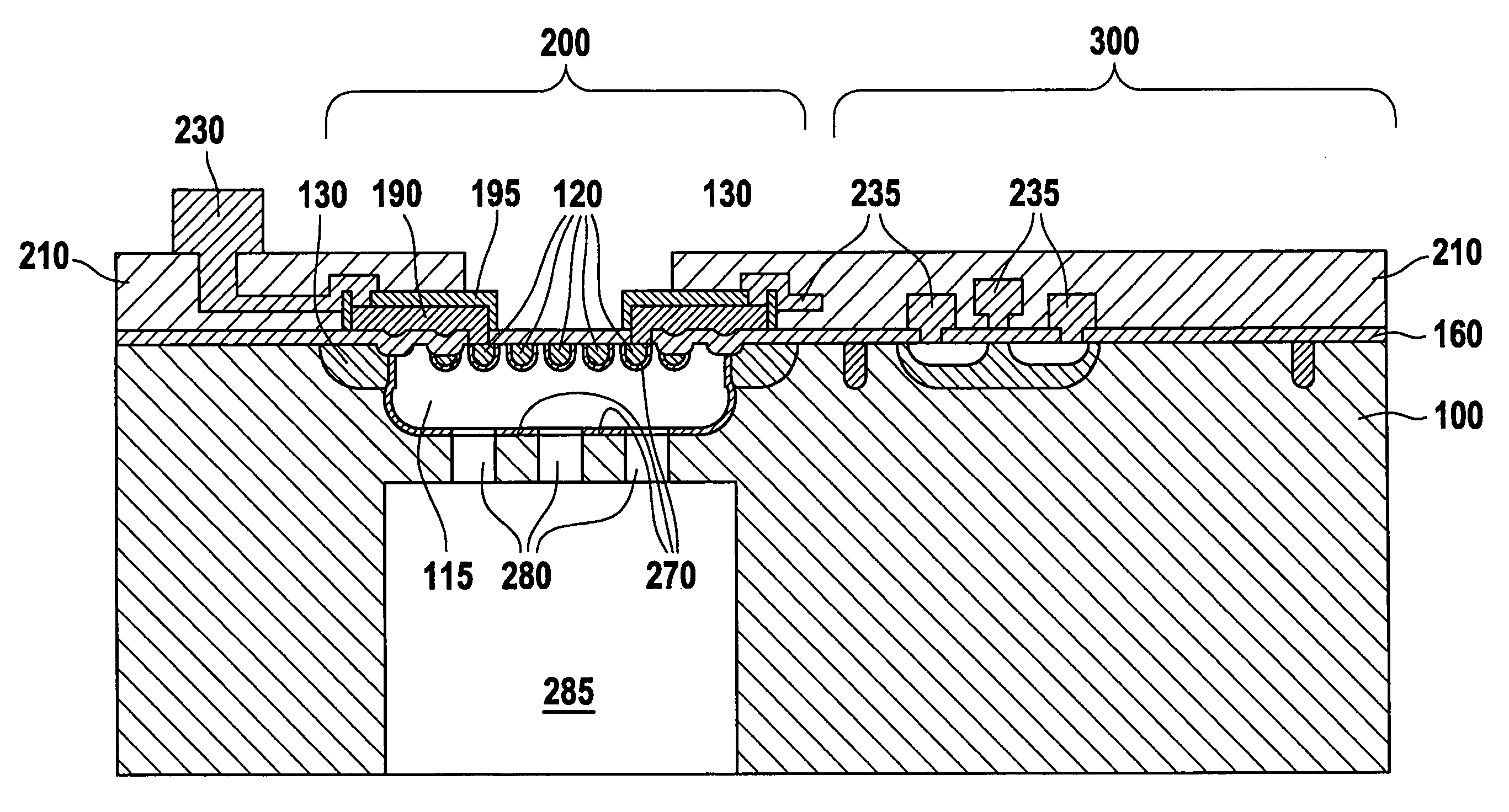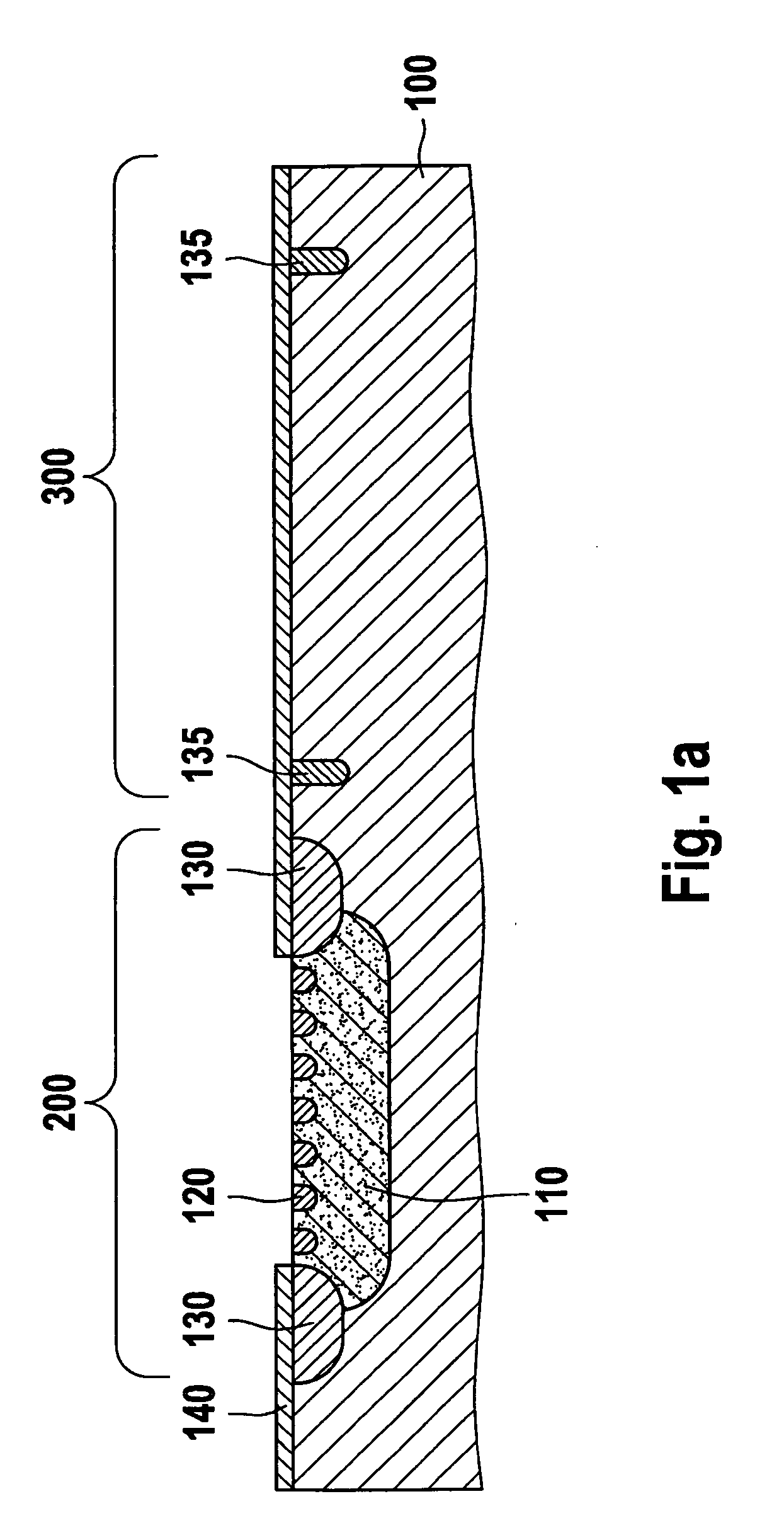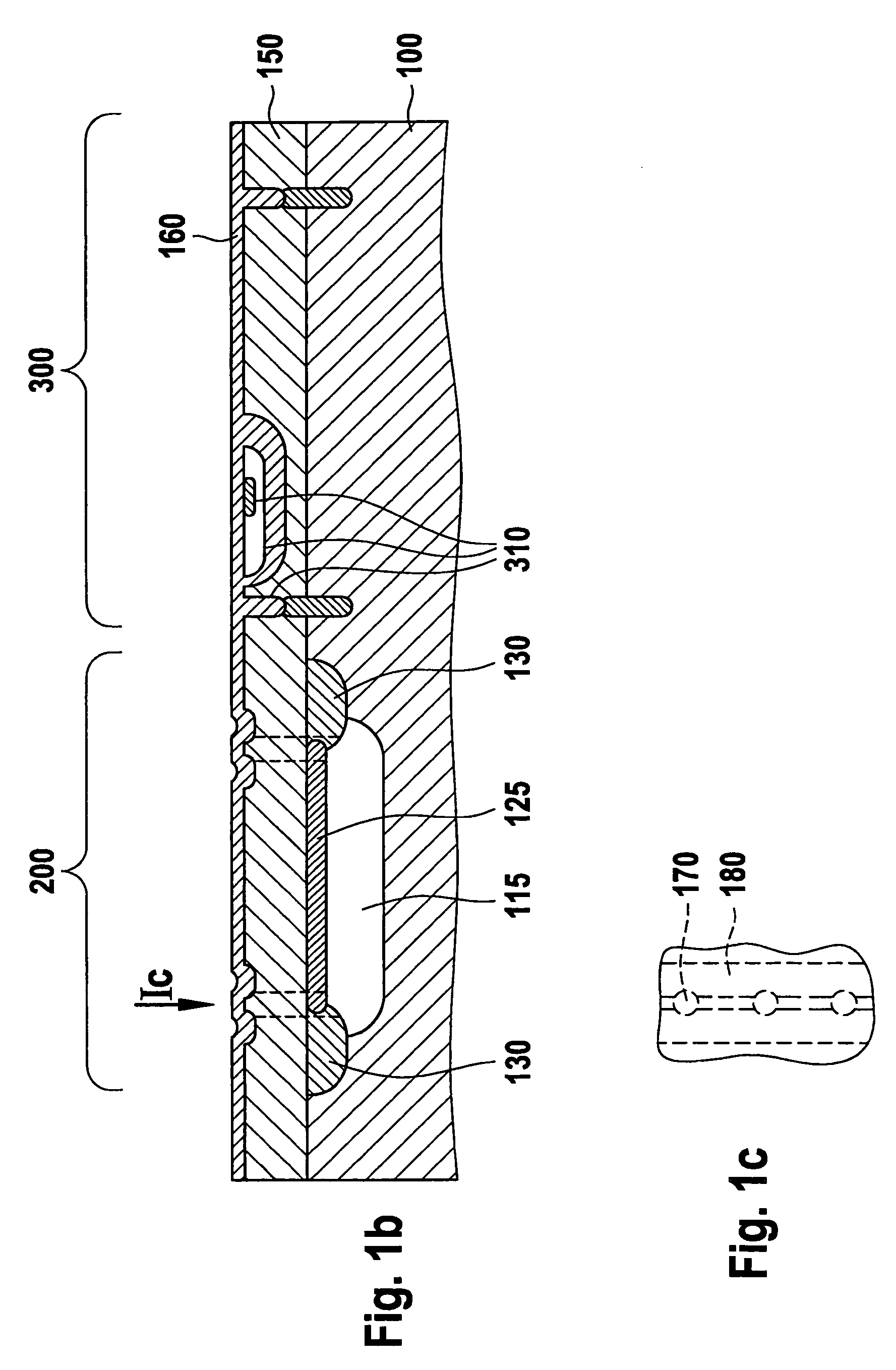Micromechanical Capacitive Pressure Transducer and Production Method
a capacitive pressure transducer and micro-mechanical technology, applied in the direction of fluid pressure measurement, fluid pressure measurement by electric/magnetic elements, instruments, etc., can solve problems such as unsatisfactory leakage currents
- Summary
- Abstract
- Description
- Claims
- Application Information
AI Technical Summary
Benefits of technology
Problems solved by technology
Method used
Image
Examples
Embodiment Construction
[0020]A capacitive pressure measurement requires electrodes that are set apart and electrically insulated from one another, which should be electrically controlled individually. According to the exemplary embodiments and / or exemplary methods of the present invention, these electrically insulated electrodes are worked out of a semiconductor substrate. The first electrode may be formed by the use of a doped semiconductor substrate itself. In an additional exemplary embodiment, however, it is also possible to produce the first electrode in the semiconductor substrate by doping the semiconductor substrate in a spatially restricted region.
[0021]According to the exemplary embodiments and / or exemplary methods of the present invention, the second electrode, which may likewise be made of the semiconductor material and is worked out of the semiconductor substrate and possibly the epitaxy layer, may be flexibly suspended on the substrate above a cavity by a dielectric layer. Optionally, it may...
PUM
 Login to view more
Login to view more Abstract
Description
Claims
Application Information
 Login to view more
Login to view more - R&D Engineer
- R&D Manager
- IP Professional
- Industry Leading Data Capabilities
- Powerful AI technology
- Patent DNA Extraction
Browse by: Latest US Patents, China's latest patents, Technical Efficacy Thesaurus, Application Domain, Technology Topic.
© 2024 PatSnap. All rights reserved.Legal|Privacy policy|Modern Slavery Act Transparency Statement|Sitemap



